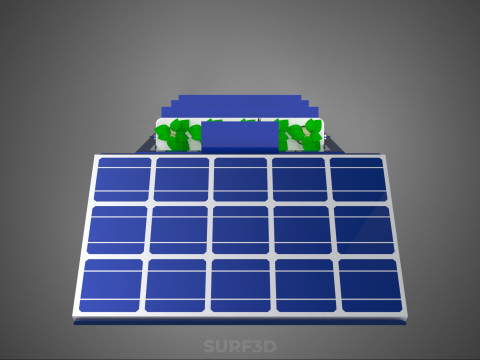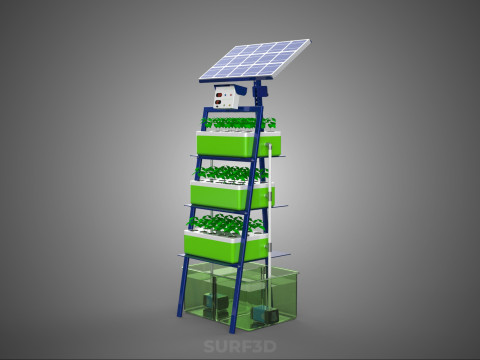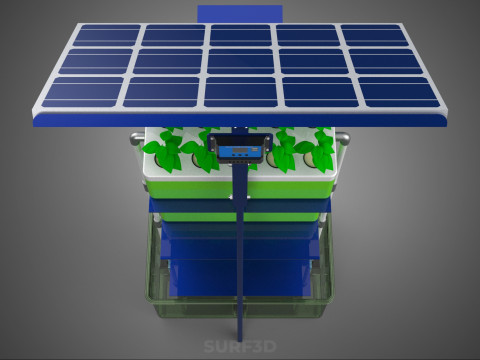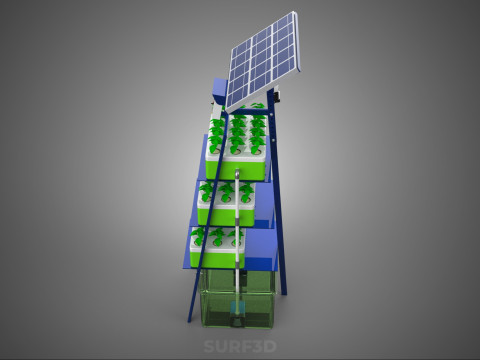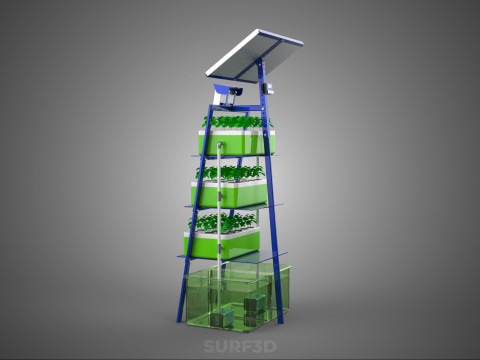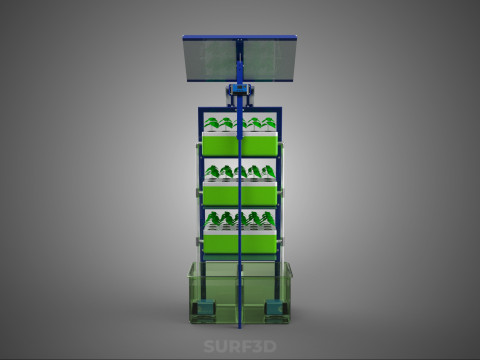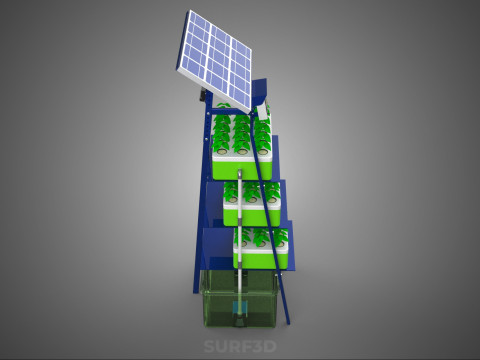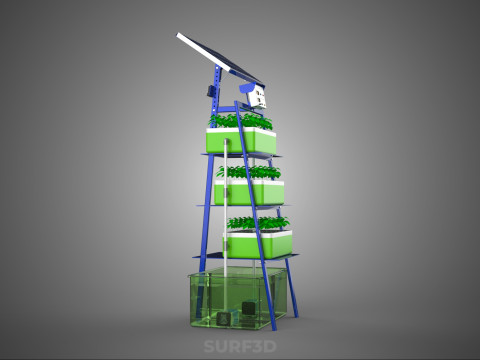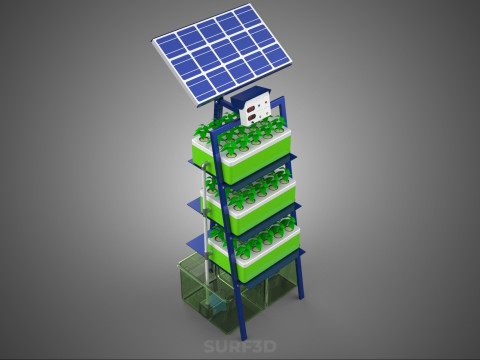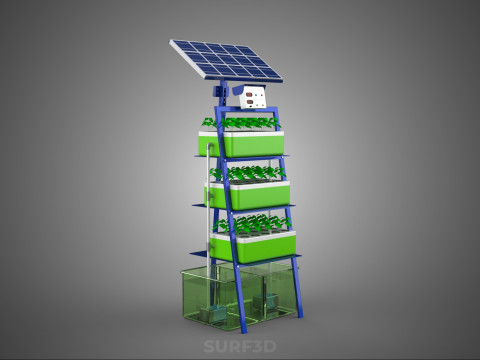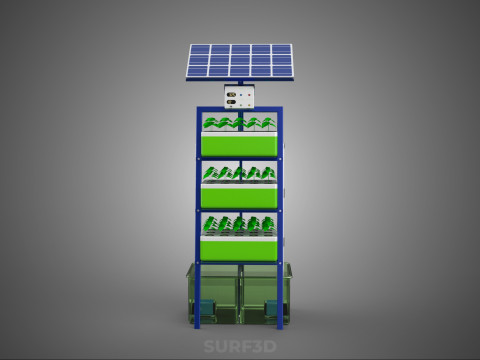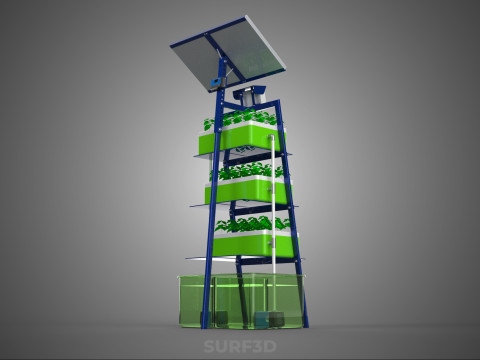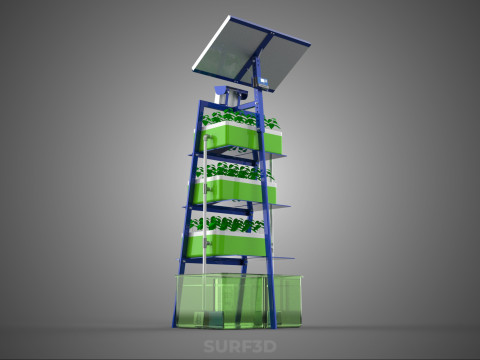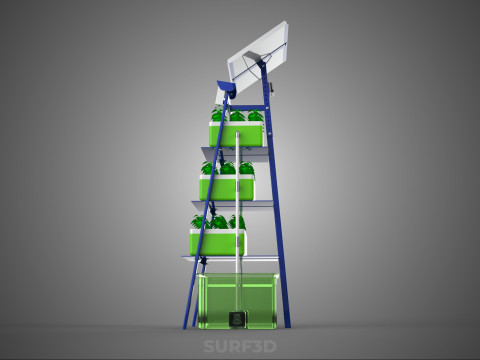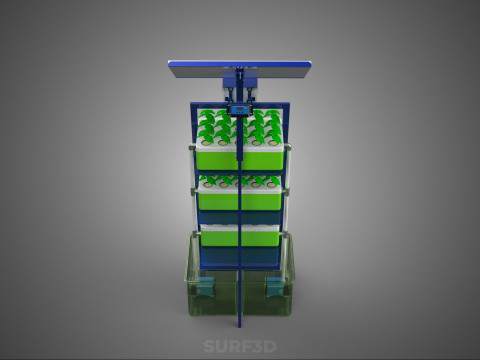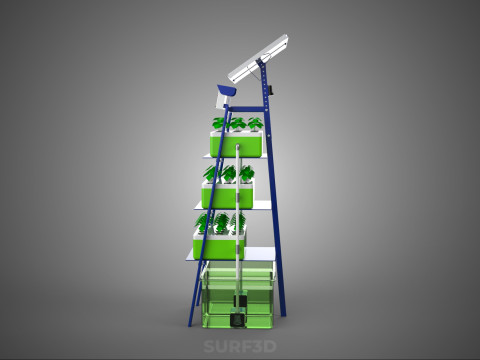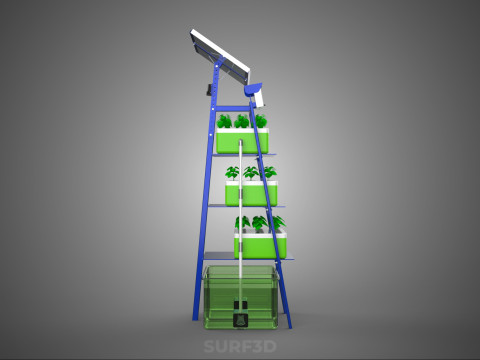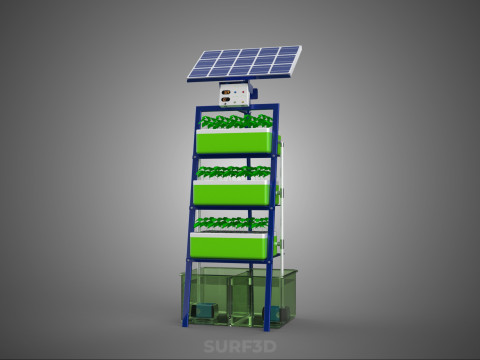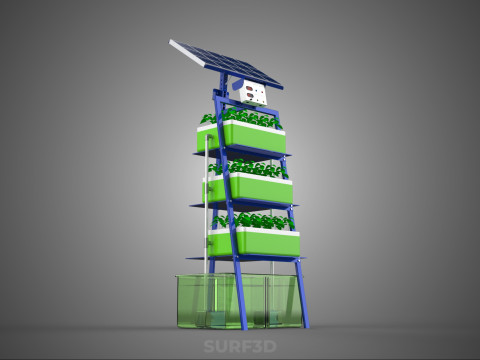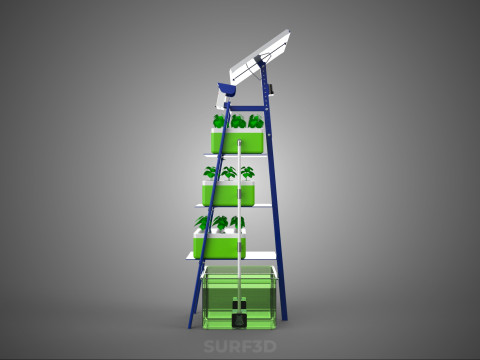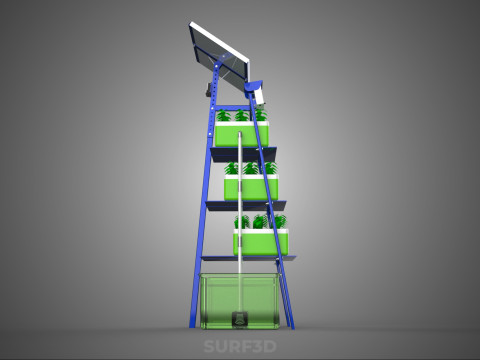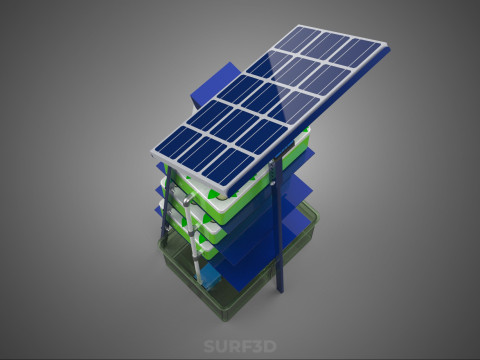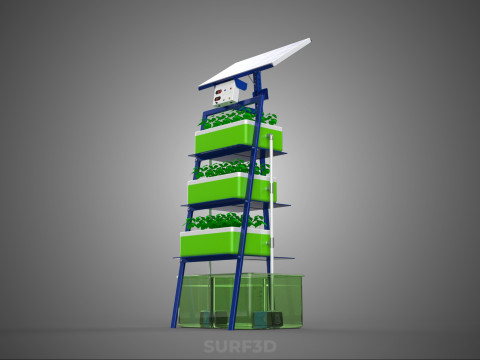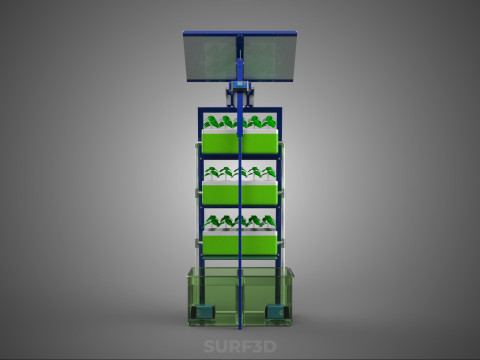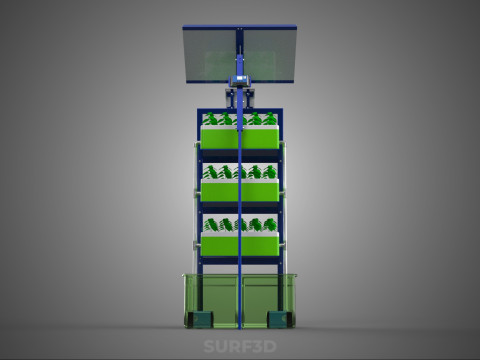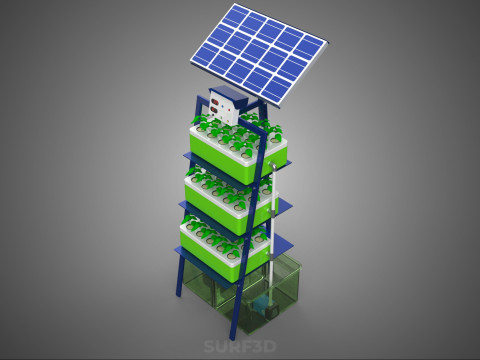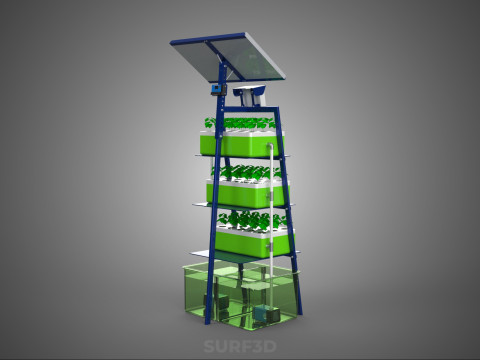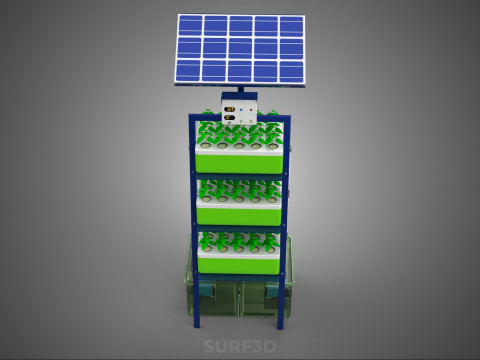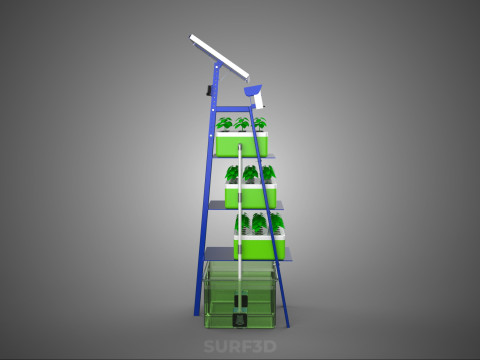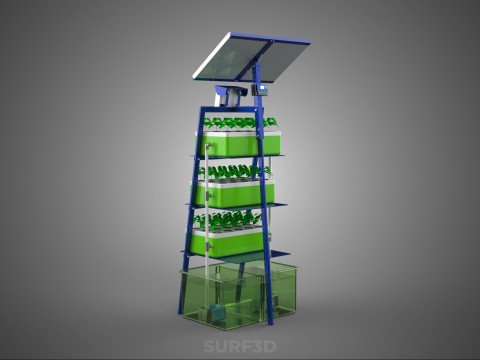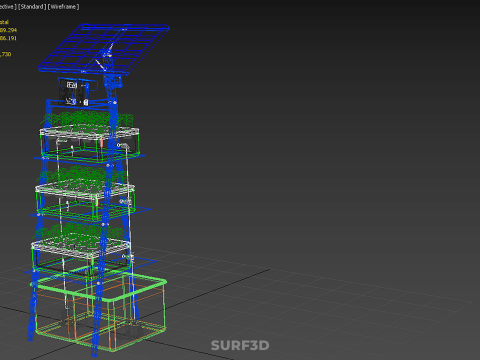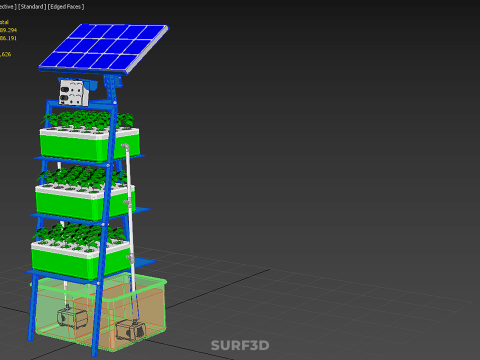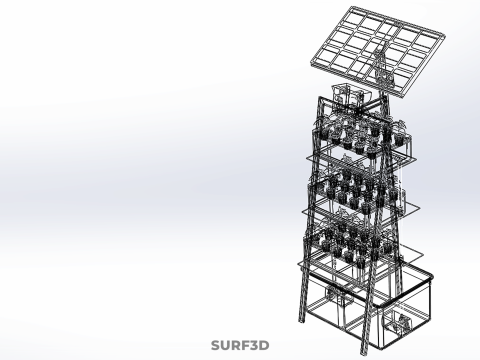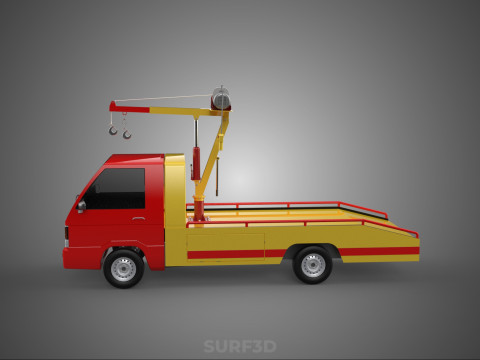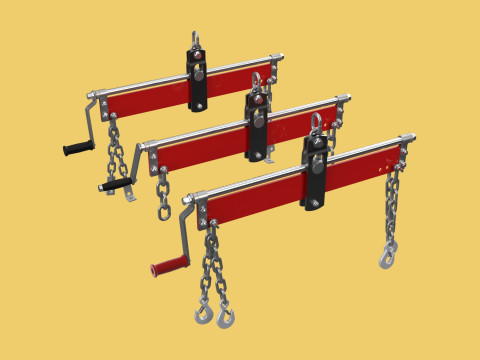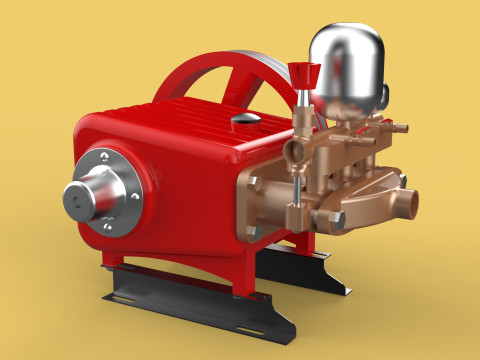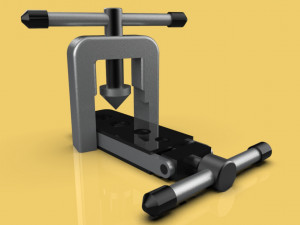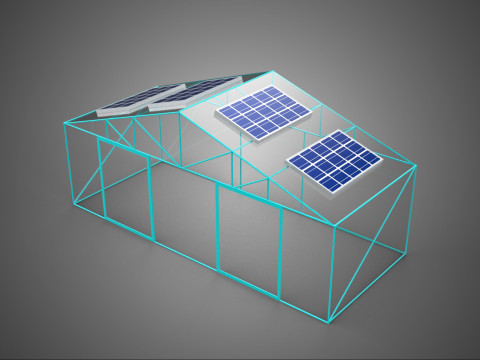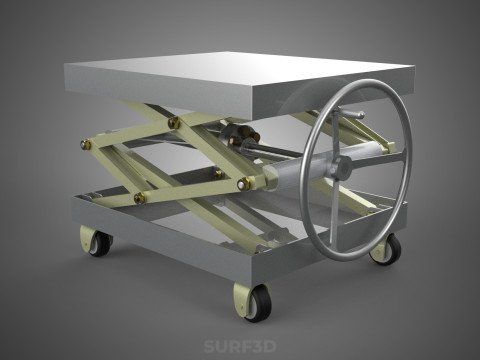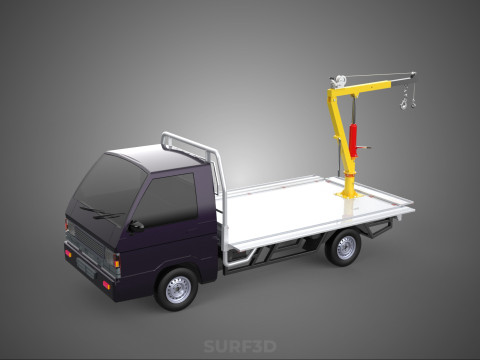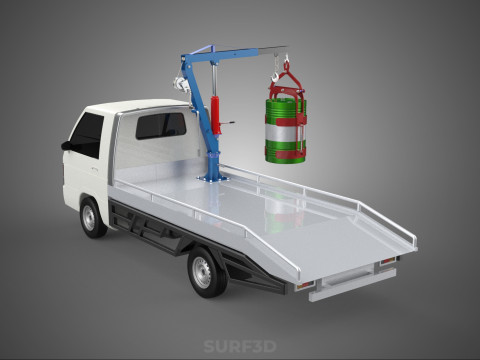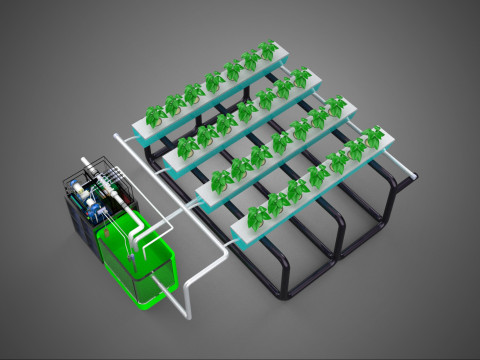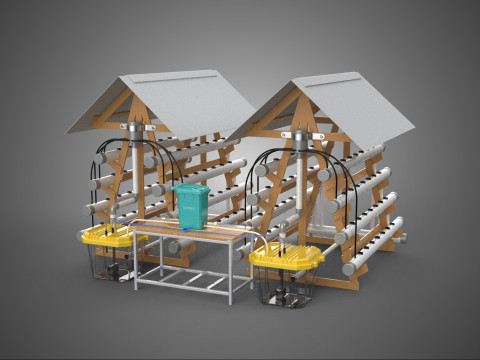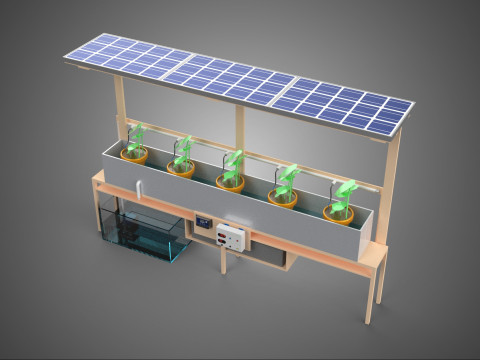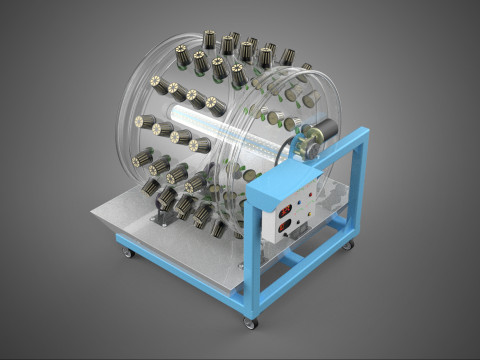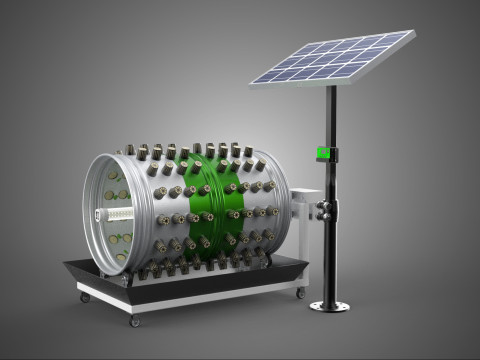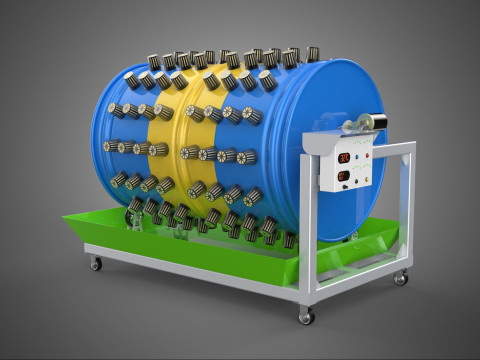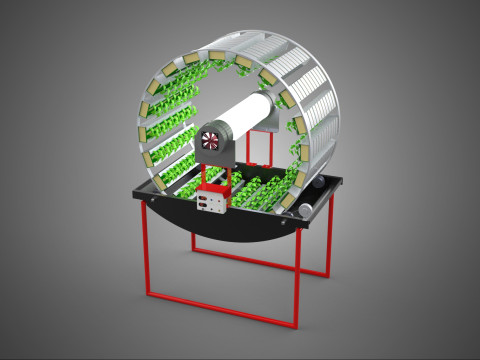IOT SMART HYDROPONIQUE CELLULE SOLAIRE ÉLECTRIQUE FERME PLANTE EAU NUTRIMENT Modèle 3D
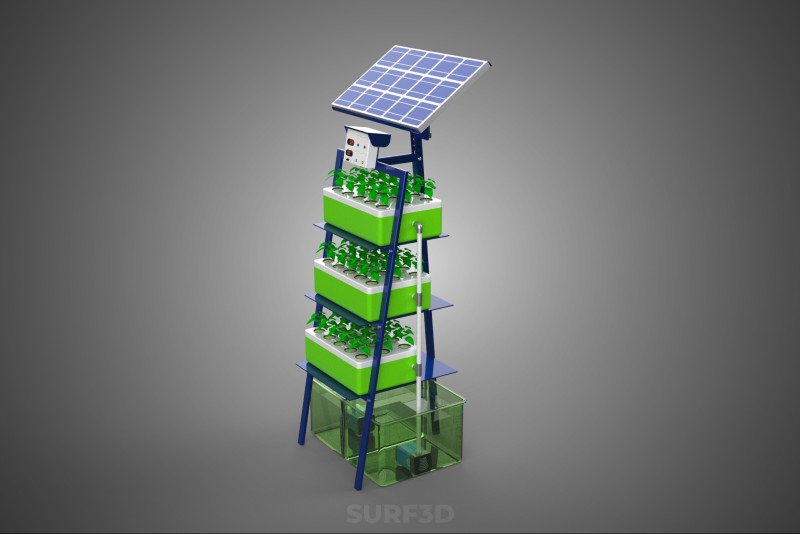
- Formats disponibles: Wavefront OBJ (.obj) 11.05 MBGLB (.glb / .gltf) 5.29 MBStereolithography (.stl) 14.05 MBACIS(.sat) 6.62 MBBlender3D (.blend) 10.73 MBAutodesk AutoCAD (.dwg) 4.10 MBSketchUp (.skp) 4.01 MB3D Studio (.3ds) 4.16 MBCollada (.dae) 7.95 MBAutodesk 3DS MAX (.max) 15.79 MBAutodesk FBX (.fbx) 20.62 MBSTEP (.step) 1.61 MBRhinoceros (.3dm) 7.37 MBIGES (.iges) 1.90 MB
- Polygones:989294
- Sommets:686191
- Animé:No
- Textures:No
- Installé:No
- Matériaux:
- Bas-poly:No
- Collection:No
- cartographie UVW:No
- Plugins Utilisé:No
- Prêt à imprimer:No
- 3D Balayage:No
- Contenu adulte:No
- PBR:No
- IA Formation:No
- Géométrie:Poly NURBS
- UVs non enveloppés:Unknown
- Vus:226
- Date: 2025-08-28
- ID de produit:595247
IOT SMART HYDROPONIQUE CELLULE SOLAIRE ÉLECTRIQUE FERME PLANTE EAU NUTRIMENT Modèle 3D obj, glb, stl, sat, blend, dwg, skp, 3ds, dae, max, fbx, step, 3dm, iges, De surf3d
High-quality 3D assets at affordable prices — trusted by designers, engineers, and creators worldwide. Made with care to be versatile, accessible, and ready for your pipeline.
Included File Formats
This model is provided in 14 widely supported formats, ensuring maximum compatibility:
• - FBX (.fbx) – Standard format for most 3D software and pipelines
• - OBJ + MTL (.obj, .mtl) – Wavefront format, widely used and compatible
• - STL (.stl) – Exported mesh geometry; may be suitable for 3D printing with adjustments
• - STEP (.step, .stp) – CAD format using NURBS surfaces
• - IGES (.iges, .igs) – Common format for CAD/CAM and engineering workflows (NURBS)
• - SAT (.sat) – ACIS solid model format (NURBS)
• - DAE (.dae) – Collada format for 3D applications and animations
• - glTF (.glb) – Modern, lightweight format for web, AR, and real-time engines
• - 3DS (.3ds) – Legacy format with broad software support
• - 3ds Max (.max) – Provided for 3ds Max users
• - Blender (.blend) – Provided for Blender users
• - SketchUp (.skp) – Compatible with all SketchUp versions
• - AutoCAD (.dwg) – Suitable for technical and architectural workflows
• - Rhino (.3dm) – Provided for Rhino users
Model Info
• - All files are checked and tested for integrity and correct content
• - Geometry uses real-world scale; model resolution varies depending on the product (high or low poly)
• • - Scene setup and mesh structure may vary depending on model complexity
• - Rendered using Luxion KeyShot
• - Affordable price with professional detailing
Buy with confidence. Quality and compatibility guaranteed.
If you have any questions about the file formats, feel free to send us a message — we're happy to assist you!
Sincerely,
SURF3D
Trusted source for professional and affordable 3D models.
More Information About 3D Model :
An IoT Smart Hydroponic Solar Cell Power Farm Plant Water Nutrient system represents an advanced, integrated agricultural technology designed for sustainable and efficient crop cultivation. It combines soilless farming techniques (hydroponics) with intelligent monitoring and control (Internet of Things and smart automation) and sustainable energy sourcing (solar photovoltaic cells) to optimize plant growth conditions, nutrient delivery, and resource utilization. This comprehensive approach addresses critical challenges in modern agriculture, including water scarcity, land availability, and energy demands.
At its core, the system employs hydroponics, a method of growing plants in water-based nutrient solutions rather than soil. This technique allows for precise control over nutrient uptake and significantly reduces water consumption compared to traditional soil farming, often by 70-90%. Various hydroponic sub-types, such as Nutrient Film Technique (NFT), Deep Water Culture (DWC), or Drip Systems, can be integrated, depending on the specific crop and design requirements, offering flexibility in cultivation strategies and optimizing root oxygenation and nutrient exposure.
The "Smart" and "IoT" components are central to the system's operational intelligence. A network of interconnected sensors continuously monitors critical environmental parameters and nutrient solution characteristics. These typically include pH levels, Electrical Conductivity (EC) for nutrient concentration, water temperature, ambient air temperature, relative humidity, and light intensity. Data from these sensors is collected, processed, and transmitted via an IoT platform, enabling real-time monitoring and remote access through internet-connected devices. Actuators, such as automated pumps, solenoid valves, fans, and LED grow lights, are precisely controlled based on sensor data and predefined algorithms or AI-driven insights. This automation ensures optimal conditions are maintained, reducing manual labor and human error. Machine learning algorithms can further refine nutrient delivery schedules, adjust environmental controls, and even predict plant growth patterns, thereby maximizing yield and minimizing resource waste.
The system's sustainability is significantly enhanced by its reliance on solar photovoltaic (PV) power. Solar panels convert sunlight directly into electricity, which powers all active components, including sensors, pumps, control units, and artificial lighting systems. An energy storage system, typically comprising deep-cycle batteries, ensures continuous operation during periods of low sunlight or at night. A charge controller regulates the charging of batteries, while an inverter converts DC power to AC for compatible devices. This self-contained energy solution minimizes operational costs, reduces the carbon footprint, and enables deployment in remote areas lacking grid infrastructure, promoting energy independence and resilience.
In operation, the IoT platform continuously collects data from the hydroponic environment. When deviations from optimal setpoints are detected (e.g., low pH, insufficient nutrients, high temperature), the smart control system automatically triggers corrective actions. For instance, dosing pumps inject specific nutrient solutions to adjust EC and pH, fans activate to regulate temperature and humidity, and water pumps circulate the nutrient solution. All these processes are logged and can be remotely managed or overridden by an operator, providing both autonomous operation and human oversight to fine-tune growing conditions.
The integration of these technologies offers numerous advantages:
* **Resource Efficiency:** Drastically reduced water consumption and optimized nutrient utilization.
* **Sustainability:** Reliance on renewable solar energy and reduced chemical runoff.
* **Increased Yield and Quality:** Precisely controlled environment leads to faster growth, higher yields, and improved crop quality.
* **Environmental Control:** Ability to grow crops year-round, irrespective of external climate conditions.
* **Remote Management:** Allows farmers to monitor and control operations from anywhere, enhancing flexibility and efficiency.
* **Reduced Labor:** Automation minimizes the need for manual intervention in daily tasks.
* **Scalability:** Systems can range from small home units to large commercial installations.
* **Site Independence:** Enables farming in non-arable lands, urban settings, or off-grid locations.
This advanced system represents a paradigm shift in agricultural practices, addressing critical challenges such as water scarcity, land availability, and energy demands. By leveraging the synergy of IoT, smart automation, hydroponics, and solar power, it paves the way for a more sustainable, resilient, and efficient future for food production globally.
KEYWORDS: IoT, Smart Farming, Hydroponics, Solar Power, Precision Agriculture, Sustainable Agriculture, Controlled Environment Agriculture (CEA), Automated Farming, Sensor Technology, Actuators, Renewable Energy, Water Conservation, Nutrient Management, Remote Monitoring, Data Analytics, Machine Learning, Environmental Control, Crop Optimization, Energy Efficiency, Urban Farming, Off-grid Systems, Photovoltaic (PV) Cells, Digital Agriculture, Resource Management, Yield Enhancement, Food Security, Soilless Cultivation, Automated Nutrient Delivery, Climate Resilient Agriculture, Smart Greenhouse
Avez besoin de plus de formats?
Si vous avea besoin d’\autre format veuillez ouvrir un billet d’\assistance et demandez le. Nous pouvons convertir les modèles de 3D en: .stl, .c4d, .obj, .fbx, .ma/.mb, .3ds, .3dm, .dxf/.dwg, .max. .blend, .skp, .glb. Nous ne convertissons pas les scènes 3D et des formats tels que .step, .iges, .stp, .sldprt.!Informations d'utilisation
IOT SMART HYDROPONIQUE CELLULE SOLAIRE ÉLECTRIQUE FERME PLANTE EAU NUTRIMENT - Vous pouvez utiliser ce modèle 3D libre de droits à des fins personnelles et commerciales, conformément à la Licence de Base ou à la Licence Étendue.La Licence de Base couvre la plupart des cas d'utilisation courants, notamment les publicités numériques, les projets de conception et de visualisation, les comptes de réseaux sociaux professionnels, les applications natives, les applications web, les jeux vidéo et les produits finis physiques ou numériques (gratuits ou payants).
La Licence Étendue inclut tous les droits accordés par la Licence de Base, sans limitation d'utilisation, et autorise l'utilisation du modèle 3D dans un nombre illimité de projets commerciaux, dans des conditions de libre de droits.
En savoir plus


 English
English Español
Español Deutsch
Deutsch 日本語
日本語 Polska
Polska Français
Français 中國
中國 한국의
한국의 Українська
Українська Italiano
Italiano Nederlands
Nederlands Türkçe
Türkçe Português
Português Bahasa Indonesia
Bahasa Indonesia Русский
Русский हिंदी
हिंदी
